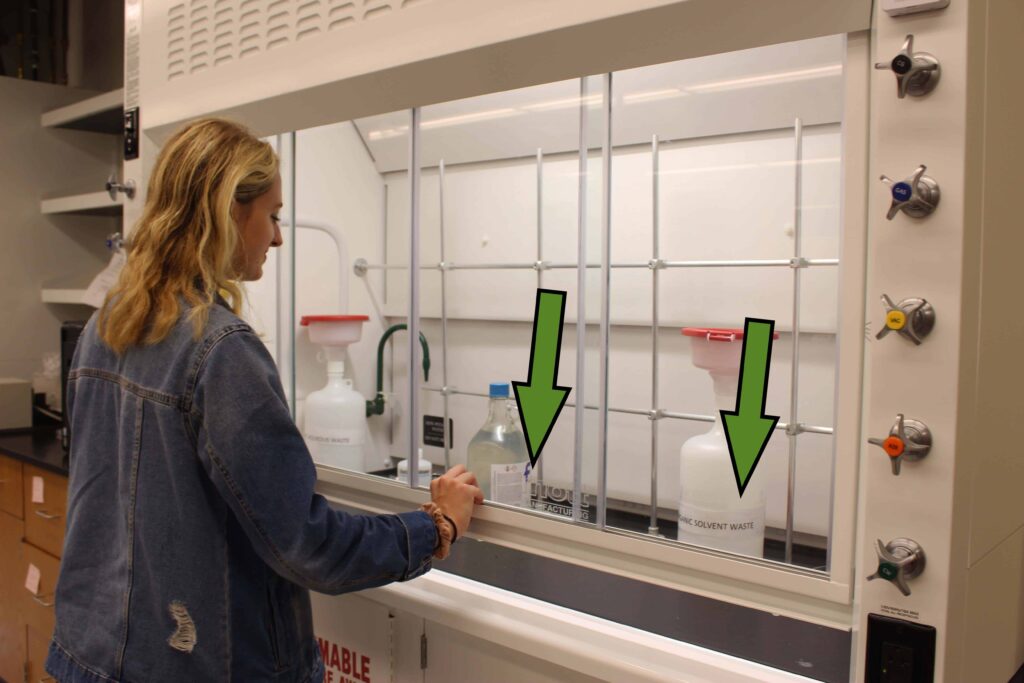Shut the Sash: Do Your Part to Save Energy in Salem Hall

By: Kellie Shanaghan
The newly-renovated Salem Hall, longtime home of the Chemistry Department, has high potential for energy savings — but only if everyone interacts with the space correctly. One critical step is shutting the glass doors, called sashes, on the fume hoods when they are not in use.


“We have installed the efficient technology, but behavior [is] critical,” Director of Maintenance and Facilities, Michael Draughn, said. “We need to condition students, faculty, and staff to use it correctly.”
The 60-year old building has been updated with self-regulating systems, larger labs, common space and a modern design throughout. The renovation was a 55,000 square foot, $21 million project.
The 20% increase in the number of fume hoods throughout Salem Hall will improve teaching and research, however hoods are also one of the most energy intensive pieces of laboratory equipment. Significant savings can be achieved by keeping these ventilated enclosures that protect against exposure to hazardous chemicals, closed.
Each new hood in pulls in about 64 cubic feet of air per minute. If open, they will exhaust all the heated or cooled air from the lab and fans must work to bring outside air in to replace it.
With a cubic foot of air costing about $5 per year, if all sashes and hoods in Salem Hall were left open, there would be an added $375,000 in wasted energy use. Everyone in the lab can help save energy simply by keeping the sash shut. Experiments will function the same even while the sash is closed.
Additional smart technologies are improving building efficiency in other areas. New ventilation systems in each room know when air needs to be replaced, rather than constantly cycling in outside air. Updated LED lighting will turn off after 15 minutes of inactivity, and turn completely off after 30.
Chris Poe, Assistant Director of Planning & Construction, and his team found a machine that was constantly using water as a cooling mechanism at a rate of five gallons per minute.
“That [one machine] was about three percent of our water use on campus,” Draughn explained. “Water is often secondary because we do not report it out, but reduction of water as resource saves us money.”
Updates like replacing old equipment, updating the deionized water system and installing a central vacuum mechanism that no longer requires the use of aspirators all contribute to more sustainable operations at Wake Forest.
Despite these efficient systems, everyone can still take simple steps to conserve resources in Salem Hall. Shutting the sash, turning off the lights when you leave a room, making sure all water faucets are off and ensuring gas valves are closed is critical.
